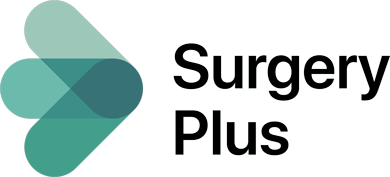By Benjamin Sanders, VP, Strategy
Imagine an employee at your company needs knee surgery for the first time. Their search criteria for a new surgeon probably looks something like this:
- Accepts their insurance
- Close to their home
- Recommended by a trusted source, like primary care physician or a friend or family member
- Has positive reviews on sites like Yelp and ZocDoc
While that’s a reasonable place to start when searching for a surgeon, none of these criteria are helpful in getting your employee to a high-quality surgeon—and nothing could be more important. Receiving care from an underqualified surgeon can lead to higher rates of complications and readmissions, putting your employees in danger and raising healthcare costs for everyone involved.
For something as consequential—and expensive—as surgery, online searches or even provider referrals aren’t enough to guide employees to the best care. Let’s get into a few of the reasons the typical ways people connect with care aren’t generally the right option for planning surgery.
Problem #1: Patient reviews take into account factors that don’t impact care
In a Reputation survey, 86% of consumers reported looking up provider reviews. Patients are most likely to use three factors when writing their review: bedside manner, staff and competence of physician.
Physician competence, of course, is an important factor on which to base ratings, and bedside manner matters, too. At the same time, factors like interactions you have with the front desk, your office wait time and whether you have to fill out your information all over again in an intake form all impact your overall impression—but don’t have any impact on the quality of your care. While patient reviews can be important, they often include “noise” that doesn’t ultimately affect outcomes.
In that same vein, a doctor with an excellent bedside manner may have rave reviews online, but that doesn’t mean they’ll deliver the best quality care.
Problem #2: Selecting a provider based on the strength of the institute’s brand does not ensure high quality
Name recognition and brand awareness play a part in most purchasing decisions. In healthcare, these factors play an outsize role. Part of the reason is that the complexity of the topic combined with the lack of reliable data means patients are forced to rely on the brand name of their hospital system. The problem is that even when a hospital is ranked well overall, there will still be a wide variation in clinical quality between surgeons.
The data bears this out. An Embold Health analysis found a wide variation within highly acclaimed hospitals and surgical groups. The overall performance score for surgeons, as measured by effectiveness, appropriateness, and cost, varied by up to 70 points within the same institution.
Some of those lower-ranked surgeons may be trainees at big-name training hospitals. Training new surgeons is essential for the future of healthcare—but getting care from trainees isn’t ideal if you’re the one on the receiving end.
Problem #3: Doctor referrals tend not to be data driven
A referral from a patient’s primary care doctor is another trusted source. In fact, a recent National Bureau of Economic Research Study showed a physician’s referral has “dramatically greater” influence than does the out-of-pocket cost to patients or their proximity to that care. However, research suggests that physician referrals to surgical care aren’t generally data driven. Instead, physicians use factors like professional experience and training, personal beliefs about surgical quality, and perceived convenience when making patient referrals.
Problem #4: Patients don’t have access to the metrics that matter most
In public health circles, providing transparent access to data is a common trope. But the issue is that when information is available at all, it’s rarely packaged in a way the average person can understand. Provider navigator tools and mobile apps frequently show information like years practicing, medical school, and some sort of overall “rating.” While these are all potentially useful indicators of quality, to leverage them effectively, you need deep context the average patient does not have.
Even if a patient could understand the data, there is no consistent way of defining and reporting outcomes data—the most important measurement of quality. How is an “outcome” defined? How should someone compare outcomes for a doctor that operates on the hardest cases to a doctor that only takes average patients? Do doctors even have to report their outcomes data? Is anyone validating the data that is being reported? If the patient can’t compare how two doctors have performed in an accurate way, they can’t make truly informed decisions on their own.
Solutions for employers
When patients are left on their own to find surgical care, they’re unlikely to find the ideal option with their existing resources. Employers have a key role to play in how employees connect with the best surgical care for them. Providing access to Centers of Excellence has long been a solution employers leverage, but it’s important to consider some of the issues with a traditional COE model and ensure accessibility is core to your offering. Consider looking for a COE program that:
- Assesses quality at the surgeon level. The physician, not the facility, makes the decision to do—or not do—a procedure. That makes their specific training, credentials, licensure, board certifications, pre- and post-operative approach, experience, and past outcomes more important than where they practice. Look for a COE that builds a network of surgeons based on rigorous criteria at the individual provider level. At EDH, we certify all surgeons at the individual level using a 16-point quality check.
- Provides concierge guidance. Surgery is a significant medical and financial event. Patients look to trusted sources – reviews from others like them, family members, and primary care providers – for referrals. Look for a COE solution that provides concierge-level service that feels personal and trustworthy and makes the entire process straightforward to navigate. EDH has an onsite Care Advocate team to provide individualized support for every member. On average, a member will have their consult scheduled within 22 days of their first call.
- Includes both national and local care. In a traditional COE model, members may travel hundreds of miles to reach an industry-leading facility. While some cases may call for travel, in most cases, quality care can be found locally. At EDH, more example, more than 90% of members receive care within 40 miles of home.
- Makes care affordable for employees—while reducing your company’s overall costs. More than half of Americans put off medical care due to costs. Ask your COE solution how they recommend shaping your plan so it’s affordable for your employees. At the same time, a COE solution should help your company control costs, as well. At EDH, our rates are 50% lower than carriers on average and we bundle pricing to include the facility, surgeon and anesthesiology charge.
Ready to learn more about how EDH builds our network? Read Embold Health’s assessment, which found that the physicians in the SurgeryPlus® network outperform market peers with respect to quality and cost of care. Read more about their findings.
Want to hear from other benefits leaders who recently evaluated COE solutions for their employees? Join our webinar on March 27.




